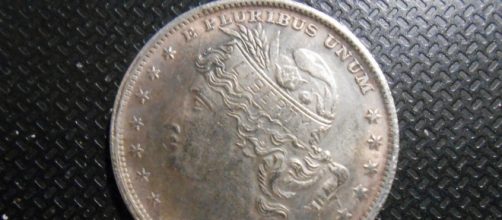The hobby of coin collecting is becoming more and more popular between hobbyists and investors who correctly consider it a safe investment. As in almost all cases when the demand for a product rises, scaammers enter the market and attempt to defraud buyers by selling them fakes. Unfortunately this is also the case with coins. A recent example of such scammers is the Chinese Counterfeiting Ring that was exposed 3 weeks ago. For many years they defrauded investors by selling them high quality Fake silver and gold plated coins instead of the real solid silver and gold coins.
The law
In simple words according to the Collectible Coins Act and the Hobby Protection Act, it is illegal to manufacture, import, introduce into the market, distribute or sell amy reproduced numismatic item which is not permanently marked with the word “COPY” in the United States. The great majority of countries in the world have similar legislation.
The 3 categories
Although there are many types or categories of fake collectible coins, the author of this article has tried to make it as simple as possible by dividing them into three categories in order to make this article as useful as possible to every reader, especially those who are new to the hobby or just occasionally purchase coins for investment purposes.
These categories are as follows:
The Good
According to the law mentioned above, these should not be defined as fakes or counterfeit because they are permanently marked with the word “COPY”. The correct definition for such coins is replicas or reproductions. It is legal to manufacture, distribute and sell such items as their purpose is not to defraud the buyers as it is clear to them what they are buying.
These are considered more or less harmless as it is extremely difficult to remove a permanent mark from a coin without damaging it and reducing its value to just the value of its metal. However, with the technology nowadays, who knows?
Any reasonable person would ask why would collectors buy such replica coins. The answer is very simple.
To use as “space fillers” in their coin albums. Some coins which are part of a collection are extremely expensive or hard to find. To many collectors (including the author of this article) it becomes almost an obsession to complete a specific collection and really get upset when they open their album and see an empty space there. It often makes them feel better to buy a “space filler” and place it in the empty space in their album until they can find or afford the specific coin they need. The author of this article would suggest that if you find yourself in such a situation, where you feel so strongly about buying a “space filler”, to consider the alternative of buying a replica even if it is legal.
Buy an authentic at a much lower grade and use that as a “space filler” until you can find or afford a higher grade one. Lower grade coins are sold at a much lower price than figher grade ones.
The Bad
Here there is a paradox as the author describes these as “Bad”. The fact is that the better made a fake is, the more dangerous it is to defraud even an experienced collector. Some of these are so well made that they even ended up in museum collections. The forgers use modern, sometimes ingenius ways to create very well made fakes. The most basic things to consider are the differences from an authentic coin in the weight, the color, the size and the corrosion however, these are too basic and can easily be detected.
In order to learn how to distinguish well made fakes one has to read, study known examples of each different method and be careful. The most dangerous ones are those authentic coins that have been altered. The forgers take an authentic coin and alter the date, the mintmark or any other feature of an inexpensive coin to make it look like an expensive one. Again some of their techiques are so ingenius that are extremely difficult to detect.
In order to avoid being defrauded, a collector or investor has to learn as much as possible about the subject by talking to experienced collectors using various resources that are available by numismatic societies like the American Numismatic Asoociation that even offers a course on how to detect such fakes.
Additionally, when the price of a specific coin is too good to be true then just avoid it in order to be safe than sorry.
The Ugly
These are badly made easily detectible fake coins mainly produced in China, which does not have adequate legislation to regulate this, and are sold at very low prices at well known websites. Those who sell them do inform buyers that they are “copies” on the listings but the coins are not permanently marked with the word “COPY”. This makes them very dangerous especially for beginners as anyone can knowingly buy them and try to pass them off as authentic.

